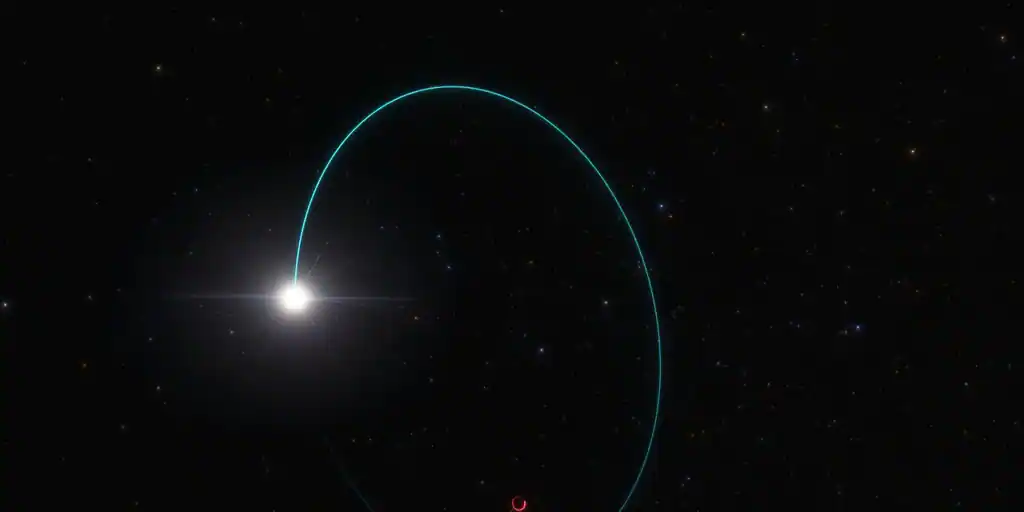Just 2,000 light-years from Earth, they discovered the largest stellar black hole in the galaxy.

An international team of astronomers has just discovered the largest stellar black hole discovered in our galaxy. The object, which has a mass of 33 solar and classified as Gaia BH3, was discovered in data from the European Space Agency’s Gaia mission, which observed a strange “wobble” of a star accompanying a black hole. Its impressive mass was later confirmed by the European Southern Observatory’s (ESO) Very Large Telescope (VLT) in Chile. The discovery has just been published in the journal Astronomy and Astrophysics.
Stellar black holes (which have nothing in common with the supermassive black holes that exist in galactic centers, such as Sagittarius A* in our Milky Way with its four million solar masses) are formed from the collapse of very large stars. , and those known in our Milky Way usually do not exceed on average about 10 times the mass of the Sun. Even the largest stellar black hole in our galaxy known so far, Cygnus X-1, is only 21 solar masses. makes this new find something truly exceptional.
Moreover, to the surprise of researchers, Gaia BH3 is very close to us, “only” 2,000 light years away, in the constellation Aquila, making it the second closest black hole to Earth discovered so far.
“No one expected to find a hitherto undetected high-mass black hole lurking so close,” says Pasquale Panuzzo, a member of the Gaia collaboration and lead author of the paper. “This is a once-in-a-lifetime discovery.”
Data checking
To confirm their discovery, Gaia scientists, whose primary mission is to observe the motion, composition, speed and position of the galaxy’s billions of stars to create the most detailed 3D map yet, used data from ground-based observatories including Ultraviolet and Visual Echelle. Spectrograph (UVES) on VLT ESO. The observations revealed key properties of the companion star, which, together with data from Gaia, allowed astronomers to accurately measure the mass of BH3.
Using other detection methods, astronomers have previously found similarly massive black holes outside our galaxy and believe they may be formed by the collapse of stars with very few elements heavier than hydrogen and helium in their chemistry. These low-metallicity stars are thought to lose less mass during their lives and therefore have more material to form high-mass black holes after their death. But until now, there has been no evidence directly linking metal-poor stars to high-mass black holes. What Gaia’s companion star BH3 just decided.
Unique find
Stars that live in pairs, forming binary systems, usually have very similar compositions, since most of them were born together and from the same molecular clouds. This means that the BH3 companion contains important information about the star that collapsed and created this exceptional black hole. In fact, the data scientists collected showed that the black hole’s companion is a very metal-poor star, indicating that the star that gave birth to BH3 must also have been poor, as the theory predicts.
The researchers decided to publish their paper before the next release of Gaia data due to the unique nature of the discovery. This way, other astronomers can immediately begin studying the black hole without waiting for the full release of data from the European mission, which is not scheduled until the end of 2025.